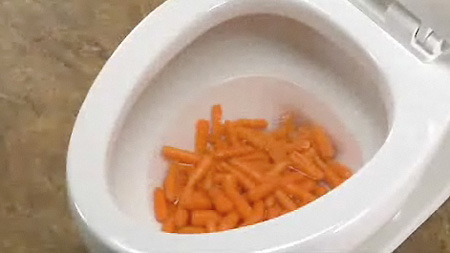Can One to Dispose of Food in the Toilet?
Can One to Dispose of Food in the Toilet?
Blog Article
Do you find yourself on the lookout for facts around Is it safe to flush food (especially rice) down the toilet??

Intro
Lots of people are often confronted with the predicament of what to do with food waste, especially when it pertains to leftovers or scraps. One typical inquiry that occurs is whether it's fine to purge food down the commode. In this short article, we'll delve into the reasons people could take into consideration purging food, the repercussions of doing so, and different techniques for appropriate disposal.
Reasons that individuals could consider purging food
Absence of understanding
Some people might not know the possible harm triggered by purging food down the commode. They might incorrectly believe that it's a safe practice.
Ease
Flushing food down the bathroom might seem like a quick and simple option to getting rid of unwanted scraps, specifically when there's no neighboring garbage can available.
Idleness
Sometimes, individuals may simply choose to flush food out of large negligence, without taking into consideration the effects of their actions.
Repercussions of flushing food down the bathroom
Environmental influence
Food waste that ends up in waterways can add to contamination and injury aquatic environments. Furthermore, the water made use of to purge food can stress water sources.
Pipes concerns
Purging food can result in clogged up pipelines and drains pipes, creating pricey pipes repairs and hassles.
Types of food that ought to not be flushed
Fibrous foods
Foods with coarse structures such as celery or corn husks can get entangled in pipes and create blockages.
Starchy foods
Starchy foods like pasta and rice can absorb water and swell, bring about obstructions in pipelines.
Oils and fats
Greasy foods like bacon or cooking oils need to never be purged down the toilet as they can strengthen and trigger clogs.
Appropriate disposal approaches for food waste
Using a garbage disposal
For homes geared up with waste disposal unit, food scraps can be ground up and flushed with the pipes system. However, not all foods appropriate for disposal in this fashion.
Recycling
Certain food packaging products can be recycled, reducing waste and lessening environmental influence.
Composting
Composting is an eco-friendly method to get rid of food waste. Organic products can be composted and used to enhance soil for gardening.
The importance of correct waste management
Decreasing environmental harm
Appropriate waste management techniques, such as composting and recycling, assistance lessen pollution and preserve natural deposits for future generations.
Protecting pipes systems
By avoiding the method of flushing food down the commode, home owners can avoid expensive plumbing fixings and maintain the integrity of their pipes systems.
Final thought
Finally, while it might be appealing to purge food down the bathroom for ease, it's important to recognize the possible repercussions of this activity. By taking on appropriate waste management techniques and taking care of food waste sensibly, people can contribute to much healthier pipes systems and a cleaner setting for all.
FLUSH FOOD DOWN THE TOILET?
FLUSHING FOOD CAN CAUSE BLOCKED DRAINS IN YOUR HOME
All of the plumbing fixtures in your home are connected to the same sewer pipe outside of your home. This outdoor sewer pipe is responsible for transporting all the wastewater from your home to the Council sewer mains. Even small pieces of food that go down the kitchen sink can cause problems for your sewer. It should therefore be obvious that flushing larger bits of food, such as meat, risks a clog in either the toilet itself or the sewer pipes. Flushing greasy food is even more problematic because oil coagulates when it cools, coating the interior lining of your pipes.
THE TOILET IS NOT A BIN
Food isn’t the only thing that people shouldn’t be flushing down the toilet. People use the toilet to dispose of all kinds of things such as tampons, makeup wipes, dental floss, kitty litter and even underwear. Water goes to great lengths to educate residents about the high costs and stress placed on wastewater treatment systems simply from people flushing the wrong stuff down the toilet. It costs taxpayers millions of dollars each year, and homeowners thousands in blocked drain repairs.
FLUSHING FOOD IS A WASTE OF WATER
Flushing food is a waste of our most precious resource - water. In June this year Level 1 water restrictions were introduced to protect water supply from drought conditions. Much of New South Wales continues to be affected by prolonged drought with recent figures revealing up to 97 per cent of the state remains in drought. Depending on whether you have a single or dual flush toilet, every single flush uses between five and 11 litres of water. In the current climate this is a huge amount of water to be wasting on flushing food that should be placed in the bin (or better yet, the compost).
https://www.jabplumbingsolutions.com.au/blog/can-you-flush-food-down-the-toilet

As a devoted person who reads on Flushing Food Down the Toilet?, I assumed sharing that excerpt was valuable. Sharing is caring. Helping people is fun. Many thanks for your time spent reading it.
Get Offer Report this page